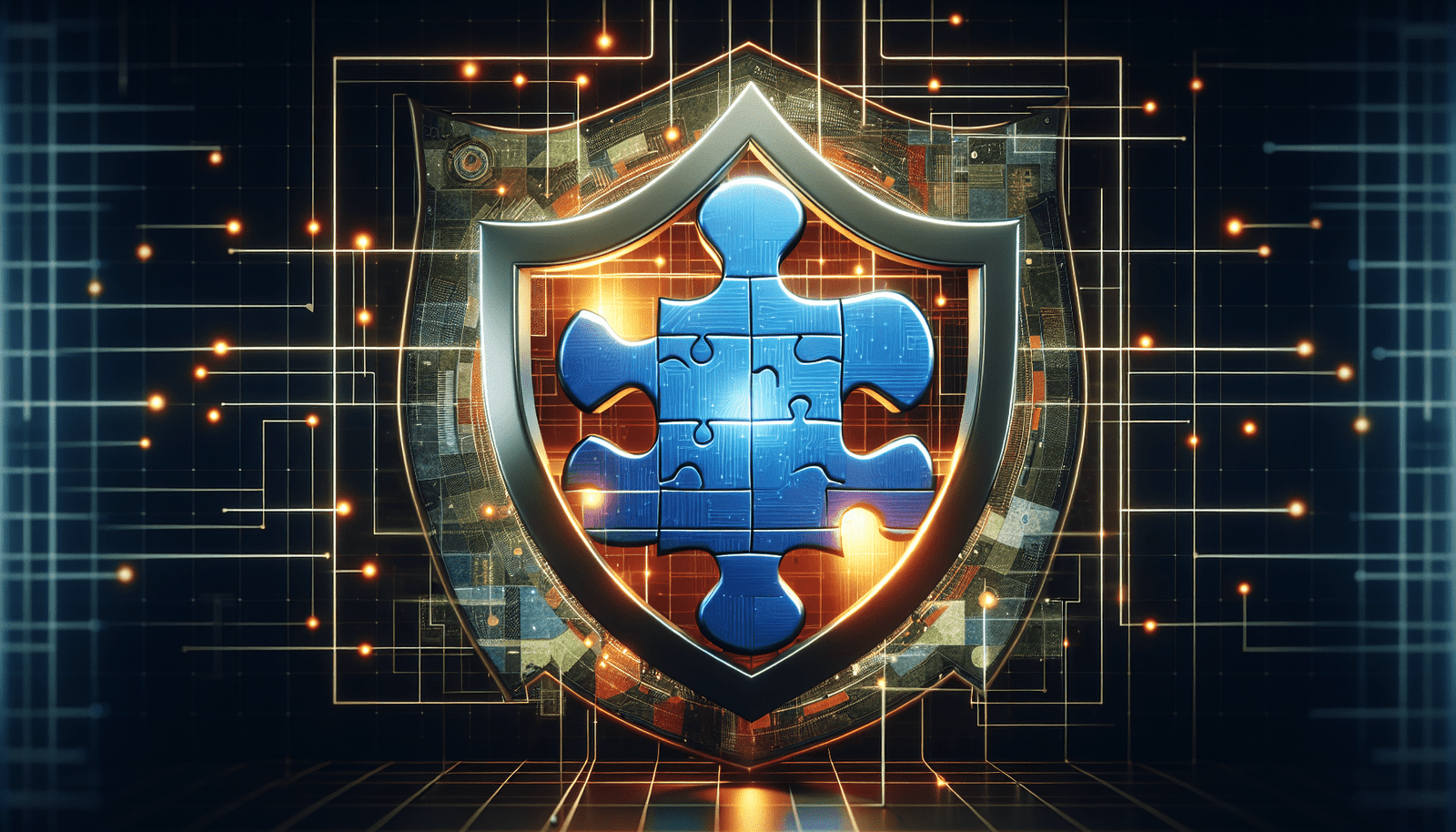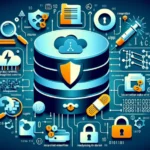
In this article, we’ll explore the methods and techniques used to uncover computer crime. With the increasing reliance on technology in our daily lives, the rise of cybercrime has become a major concern. But fear not, as there are various ways we can detect these digital crimes. From advanced analytics and data monitoring to collaboration with law enforcement agencies, we’ll uncover the strategies that can help us identify and thwart computer crime effectively. Stay one step ahead and be equipped with the tools to protect yourself and your digital assets.
Overview of Computer Crime
Computer crime refers to any illegal activity that involves the use of a computer or electronic device. With the advancement of technology, cybercriminals have become more sophisticated and the frequency of computer crimes has increased. It is essential for individuals and organizations to understand the various types of computer crimes in order to effectively detect and prevent them.
Definition of Computer Crime
Computer crime encompasses a wide range of offenses, including hacking, identity theft, phishing, malware attacks, and unauthorized access to computer systems. These crimes often aim to gain financial or personal information, disrupt computer networks, or cause damage to individuals or organizations. Detecting computer crime involves identifying suspicious activities, collecting and analyzing digital evidence, and implementing effective security measures.



Types of Computer Crimes
There are numerous types of computer crimes that individuals and organizations may fall victim to. Some common examples include:
- Hacking: Unauthorized access to computer systems or networks with the intention of stealing or modifying data.
- Identity Theft: Illegally obtaining someone’s personal information to commit fraud or other criminal activities.
- Phishing: Deceptive tactics, such as emails or websites that appear legitimate, to deceive individuals into revealing sensitive information.
- Malware Attacks: Spreading malicious software, such as viruses or ransomware, to damage or gain unauthorized access to systems.
- Unauthorized Access: Illegally gaining entry to computer systems or networks without proper authorization.
By understanding the different types of computer crimes and their methods of execution, individuals and organizations can be better prepared to detect and prevent these offenses.
Traditional Methods of Detecting Computer Crime
Detecting computer crime traditionally involved manual monitoring, audit trails, and log analysis.
Manual Monitoring
Manual monitoring involves human observation and analysis of computer systems to identify any suspicious activities. This method requires constant vigilance and expertise to recognize unusual patterns or behaviors that may indicate a potential computer crime.
Audit Trails
Audit trails are records of all activities and transactions within a computer system. By examining these logs, security professionals can trace any actions that may have resulted in a computer crime. Audit trails can help in identifying the culprits and understanding the context of the crime.
Log Analysis
Log analysis involves examining system logs, event logs, and network logs to identify patterns or anomalies that may suggest the presence of a computer crime. By analyzing these logs, security experts can determine if unauthorized access, data breaches, or other security incidents have occurred.
These traditional detection methods are still important in the fight against computer crime, but advancements in technology have led to the development of more sophisticated techniques.

Digital Evidence Collection
Digital evidence is crucial in the detection and prosecution of computer crimes. It provides tangible proof of a crime and helps investigators understand the sequence of events. Collection methods play a vital role in ensuring the integrity and admissibility of the evidence.
Importance of Digital Evidence
Digital evidence can provide critical information about the who, what, when, where, and how of a computer crime. It can help in identifying the perpetrators, their methods, and the extent of the damage caused. Moreover, digital evidence can also be presented in court to support criminal charges and secure convictions.
Methods of Collecting Digital Evidence
There are several methods employed in the collection of digital evidence:
- Disk Imaging: Creating an exact replica of a computer’s hard drive to preserve the state of the system at a specific point in time. This ensures that original evidence remains untouched while providing investigators with a working copy for analysis.
- Memory Imaging: Extracting volatile data from a computer’s RAM to capture running processes, active network connections, and other live information that may be crucial in identifying ongoing or recent criminal activities.
- Network Traffic Capture: Intercepting and analyzing network traffic to identify malicious activities, such as unauthorized access attempts, data exfiltration, or communication with known criminal servers.
- Forensic Analysis Tools: Utilizing specialized software and hardware tools designed for digital forensic investigations, such as file recovery, file system analysis, and metadata extraction.
By employing these methods, investigators can effectively collect digital evidence to support the detection and prosecution of computer crimes.
Forensic Analysis Techniques
Forensic analysis techniques enable investigators to extract valuable information from digital evidence. These techniques involve recovering deleted or hidden files, analyzing file contents, and examining network traffic to reconstruct the sequence of events and uncover potential evidence.
Data Recovery
Data recovery techniques involve retrieving lost, deleted, or overwritten files from storage devices. This process may include the use of specialized software tools to search for remnants of deleted files, as well as the examination of file system metadata and unallocated disk space. Data recovery can provide valuable evidence that may have been intentionally or accidentally concealed.
File Analysis
File analysis involves examining the contents of files to extract relevant information. This can include analyzing the file structure, metadata, timestamps, and file associations. By analyzing file contents, investigators can gain insights into the activities, intentions, and relationships of the individuals involved in the computer crime.
Network Traffic Analysis
Network traffic analysis focuses on capturing and analyzing network packets to understand communication patterns, detect unauthorized access attempts, and identify malicious activities. By studying network traffic, investigators can determine the source and destination of data, as well as identify any anomalies or abnormal behaviors that may indicate a computer crime.
Forensic analysis techniques are essential in the investigation of computer crimes. They enable investigators to uncover hidden information, identify perpetrators, and provide a comprehensive understanding of the events surrounding the crime.

Data Mining and Anomaly Detection
Data mining and anomaly detection techniques are increasingly used in the detection of computer crimes. These methods involve the analysis of large datasets to identify patterns, trends, and anomalies that may indicate the presence of criminal activities.
Using Data Mining for Crime Detection
Data mining allows investigators to analyze vast amounts of data from various sources, such as log files, databases, and network traffic, to identify patterns and correlations. By applying statistical and machine learning algorithms, data mining can help detect abnormal behavior, identify suspicious patterns, and create profiles of potential offenders.
Identifying Anomalies in Computer Systems
Anomaly detection involves identifying deviations from expected or normal system behavior. By establishing baselines and analyzing system activities, anomalies can be detected, indicating potential security breaches or other malicious activities. Anomalies may include unusual data access patterns, sudden changes in network behavior, or unexpected system resource consumption.
Data mining and anomaly detection techniques provide valuable insights and automated analysis capabilities that can enhance the detection and prevention of computer crimes.
Intrusion Detection Systems
Intrusion Detection Systems (IDS) are an integral part of computer crime detection and prevention. These systems monitor network traffic, analyze system logs, and employ different algorithms to detect unauthorized access attempts and other malicious activities.
Types of Intrusion Detection Systems
There are two main types of IDS:
- Network-based Intrusion Detection Systems (NIDS): NIDS monitor network traffic and analyze packets to detect suspicious activities or signs of intrusion. They can detect network-layer attacks, identify unauthorized access attempts, and raise alerts for further investigation.
- Host-based Intrusion Detection Systems (HIDS): HIDS focus on individual hosts or servers, monitoring system logs, file integrity, and other host-specific attributes. They can detect attacks targeted at specific systems or applications and provide real-time alerts.
How IDS Detects Computer Crime
IDS apply various detection techniques to identify computer crimes:
- Signature-based Detection: IDS compare observed network or system activities against a database of known attack patterns or signatures. If a match is found, an alert is raised for further investigation.
- Anomaly-based Detection: IDS establish baselines of normal behavior and continuously monitor for deviations. Any activity that falls outside the expected patterns is flagged as suspicious and investigated further.
- Behavioral-based Detection: IDS analyze user behaviors and system activities to detect abnormal patterns that may indicate unauthorized access or malicious intent.
By leveraging the capabilities of IDS, organizations can strengthen their defense against computer crimes and detect potential intrusions in real-time.
Artificial Intelligence in Crime Detection
Artificial intelligence (AI) has shown great potential in helping detect computer crimes effectively. AI-based algorithms and machine learning techniques can analyze large volumes of data, learn from patterns and anomalies, and identify potential threats.
AI-based Algorithms for Detecting Computer Crime
AI algorithms, such as neural networks and decision trees, can analyze datasets to identify patterns and predict potential computer crimes. These algorithms can be trained using historical data to recognize similarities and anomalies, enabling them to provide early warnings and identify emerging threats.
Machine Learning in Predicting Criminal Behavior
Machine learning techniques can be used to develop predictive models that detect patterns and trends in criminal behavior. By analyzing a variety of data sources, such as social media activity, financial transactions, and network logs, machine learning algorithms can identify indicators of potential criminal activities and generate alerts for further investigation.
AI technologies offer powerful tools for detecting computer crimes and predicting potential threats. By leveraging the capabilities of AI, organizations can enhance their detection capabilities and stay one step ahead of cybercriminals.
Cybersecurity Measures
In addition to detecting computer crimes, implementing effective cybersecurity measures is crucial to protect individuals and organizations from becoming victims of cyber attacks.
Firewalls and Network Security
Firewalls act as a critical barrier between internal networks and external threats. By monitoring incoming and outgoing network traffic, firewalls can filter and block potentially malicious data packets, protecting computer systems from unauthorized access and malware attacks. Regular updates and configurations of firewalls are essential to keep up with evolving threats.
Encryption and Secure Communication
Encryption plays a vital role in securing sensitive data and communication channels. By converting data into an unreadable format using cryptographic algorithms, encryption ensures that even if intercepted, the data remains unintelligible to unauthorized individuals. Implementing encryption technologies and promoting secure communication protocols, such as Secure Sockets Layer (SSL) or Transport Layer Security (TLS), helps protect data and prevent unauthorized access.
Cybersecurity measures are essential in safeguarding computer systems, networks, and data from unauthorized access, manipulation, and theft. By implementing robust security measures, individuals and organizations can significantly reduce the risk of falling victim to computer crimes.
Collaboration and Information Sharing
Collaboration and information sharing among cybersecurity professionals are critical for timely detection and prevention of computer crimes. The global nature of cyber threats requires a collective effort to share knowledge, insights, and best practices.
Importance of Collaboration Among Cybersecurity Professionals
By collaborating with peers, sharing experiences, and discussing emerging threats, cybersecurity professionals can stay updated on the latest trends and techniques employed by cybercriminals. Collaboration enables the rapid dissemination of critical information, helping to identify and address potential vulnerabilities before they are exploited.
Sharing Information to Identify and Detect Computer Crimes
Sharing information about computer crimes, including attack patterns, malware signatures, and other indicators of compromise, can enable faster detection and prevention of similar incidents. Trusted information-sharing platforms and networks allow cybersecurity professionals to exchange data and insights, enhancing collective defense capabilities.
Collaboration and information sharing foster a stronger cybersecurity community and enable more effective detection, prevention, and response to computer crimes.
Legal and Ethical Considerations
Detecting computer crimes involves adherence to legal frameworks and ethical responsibilities. Investigators and cybersecurity professionals must navigate complex legal landscapes and uphold ethical standards while carrying out their duties.
Legal Frameworks for Investigating Computer Crime
Different countries have specific laws and regulations governing the investigation and prosecution of computer crimes. Investigators and professionals must ensure compliance with these legal frameworks, including obtaining appropriate search warrants, following chain of custody protocols, and respecting individuals’ privacy rights.
Ethical Responsibilities of Computer Crime Detection
Ethical considerations are paramount in computer crime detection. Professionals must prioritize data privacy, confidentiality, and the preservation of the rights of individuals throughout the investigative process. This may involve obtaining informed consent, ensuring data security, and employing encryption and anonymization techniques when handling sensitive information.
Upholding legal and ethical standards is essential in ensuring the integrity of computer crime detection efforts and maintaining public trust in the justice system.
In conclusion, detecting computer crimes requires a multifaceted approach that encompasses understanding the types of computer crimes, employing traditional detection methods, collecting and analyzing digital evidence, utilizing forensic analysis techniques, leveraging data mining and anomaly detection, implementing intrusion detection systems, embracing artificial intelligence, implementing robust cybersecurity measures, promoting collaboration and information sharing, and operating within the legal and ethical frameworks. By adopting these comprehensive strategies, individuals and organizations can enhance their ability to detect, prevent, and mitigate the impact of computer crimes, ultimately ensuring the security and integrity of their digital systems and data.














